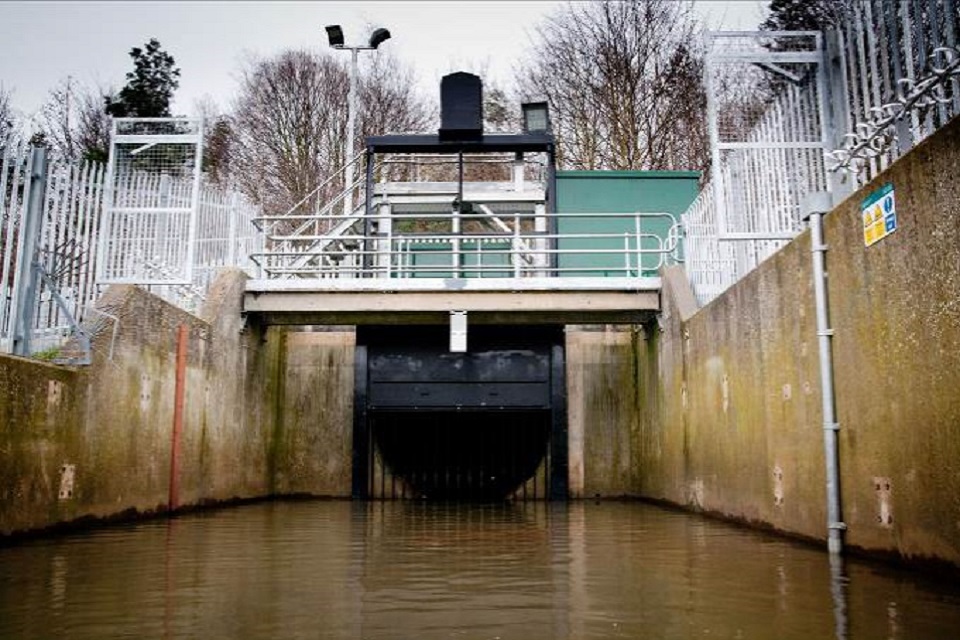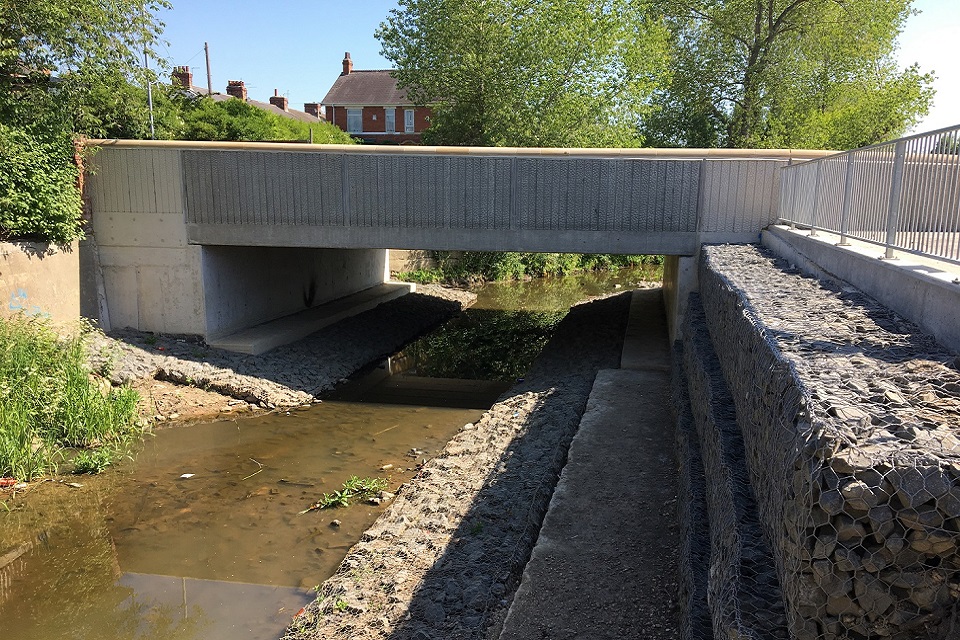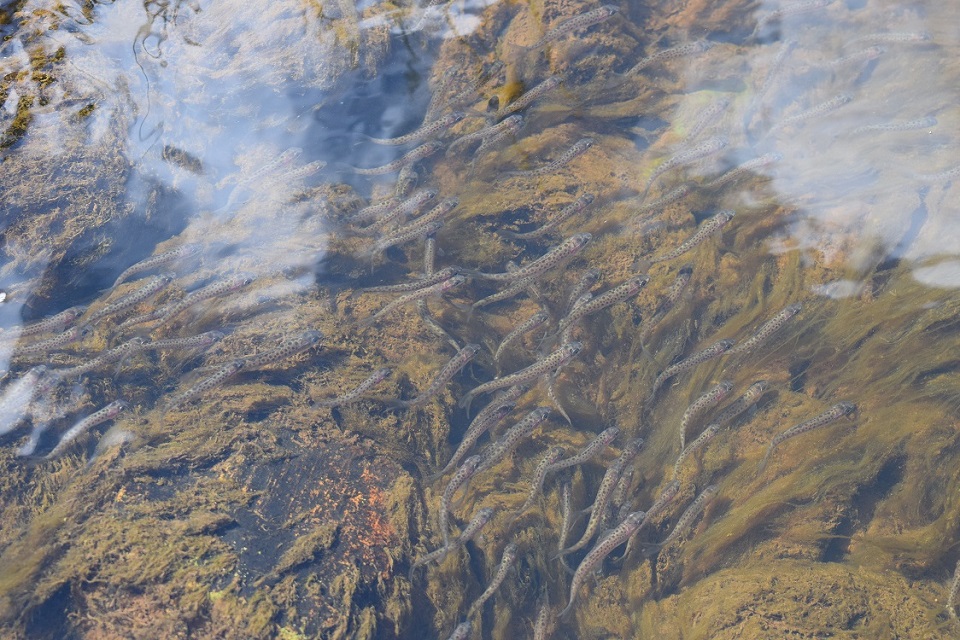Press release: Official opening of £3million North East flood scheme
The multi-million pound Lustrum Beck Flood Alleviation Scheme has been officially opened.
The Environment Agency and Stockton-on-Tees Borough Council have worked together on the £3million award-winning scheme, which included replacing Londonderry Bridge and building new flood walls along the beck.
The scheme reduces the risk of flooding to over 150 homes in the town.
An official opening event on 26 July marked the completion of the first phase of the project, while residents were invited to a community drop-in event and walking tour of the defences to find out how they are better protected from flooding.

New flood defences
Stockton-on-Tees Borough Council replaced Londonderry Bridge, on Durham Road, as part of the project. This was completed in December 2016.
The Environment Agency has built new flood walls along the beck at Bedford Street and Duddon Walk, which tie in with a raised embankment at Newtown. Work to tie in the new defences with the new bridge was completed earlier this year.
The Environment Agency also installed a new lifting screen at the culvert at Primrose Hill and had previously built a new flood wall along Bishopton Road.
Environment Agency Area Director Oliver Harmar said:
This is a fantastic project with some unique features which has increased flood protection to over 150 properties.
We’ve worked closely with Stockton-on-Tees Borough Council throughout which has enabled us to provide Stockton with an excellent scheme with a high level of protection.
And we’re not finished yet. The next phase involves looking at storing flood water further upstream at Coatham Woods, as well as creating new habitat.
This makes Lustrum Beck a great project which will see us combine traditional engineering solutions with natural flood management.

Natural flood management
The Environment Agency is looking at options to store flood water further upstream of Stockton at Coatham Woods, and is working with Newcastle University and the Forestry Commission to explore designs.
And it’s also exploring opportunities to create up to 30 hectares of water dependent habitat, including improved habitat at Sixfields.
Construction of these features is expected to start later this year and will take approximately three years.
Councillor Mike Smith, the Council’s Cabinet Member for Environment and Transport, added:
The replacement of Londonderry Bridge was an essential part of the broader scheme to help reduce the flood risk to homes.
“The old bridge was a major contributor to serious flooding because its arches obstructed the beck’s flow. Replacing it with a new, single span bridge has reduced the risk of the kind of devastating flooding we’ve seen in recent years.
We’d like to thank local people for their patience and understanding throughout this project, and it’s good to give them this opportunity to find out how the new flood protection measures all work.
The Lustrum Beck flood scheme has won a number of awards, including the Sustainability award at Constructing Excellence North East 2017, it scooped the top award for Partnership Project of the Year at the Flood and Coast Project Excellence Awards, and was highly commended at the Robert Stephenson Awards run by the Institution of Civil Engineers.
It’s important residents understand their flood risk and know what to do during a flood. Find out more about how to prepare for flooding


